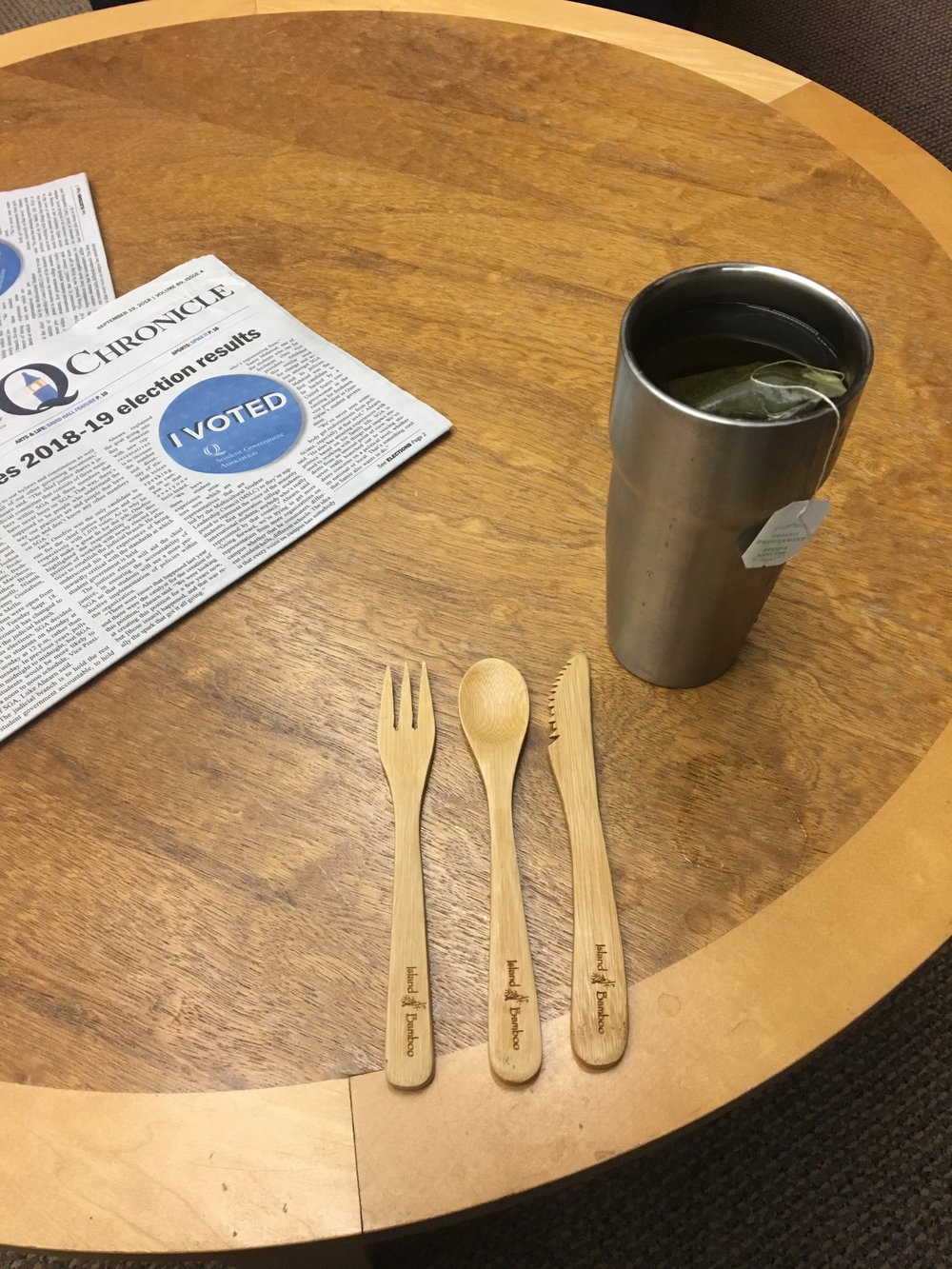This week on QNN we give you a live update on the recent bar shooting in Thousand Oaks, California. Also, information on the recent email scams targeting Quinnipiac students and midterm election headlines.
Month: November 2018
QNN Newscast – Nov. 1
On this week’s episode of QNN we give you a live update on the man who escaped the Cheshire correctional facility, how Hamden residents feel about voting in the upcoming election and and an interview with a Quinnipiac student about his capstone project regarding protests and college athletes.
Quinnipiac professor caught in sex sting: the legal steps
By Ana Grosso and Aron Fried
In the wake of Quinnipiac University finance professor and Thomas Coe’s exposure as a sexual predator, the sting operation, planned and filmed by “POPSquad”, raises one question: If police were at the scene, why wasn’t Coe arrested?
Members of “POPSquad” confronted Thomas Coe and published the sting operation in a video on Nov. 11. In the video, the group included sexually explicit messages that Coe had allegedly sent to what he believed to be a 14-year-old-boy who he was attempting to meet up with.
Section 53a-49 of the Connecticut Penal Code outlines criminal attempt as an offense.
According to the statute, a person is guilty of criminal attempt if he or she, “intentionally engages in conduct which would constitute the crime if attendant circumstances were as he believes them to be.”
There was no actual 14-year-old boy involved, but the video and subsequent released private messages clearly show that Coe believed there to be, and that he knew exactly what he was doing.
After exchanging messages, Coe arrived at the sting house just before midnight on Sunday, Nov. 11.
Police arrived to the sting house about an hour later and spoke with both Coe and members of the “POPSquad” team, but despite what looks like a very clear violation of the criminal attempt statute, they did not arrest Coe.
Deputy Chief State’s Attorney Kevin Lawler would not comment on the specifics of an investigation or even confirm the existence of one, but he said, “There are requirements for cases where officers believe that on site they have probable cause to make an immediate arrest and other cases where they go out and seek a warrant.”
Although Bristol police arrived an hour after “POPSquad” exposed Coe, they did not make an arrest because they were not involved in the investigation. In the video, Coe made indirect suicidal threats and the “POPSquad” team feared for his life and called police for precautionary measures and legal reasons.
According to the video, Coe will absolutely be arrested, especially with such detailed and documented evidence, however police must investigate the crime for themselves before making an arrest. “POPSquad” members said in the video that an arrest will take “forever” because the criminal justice system is in their opinion, “broken.”
Lawler touched on that as well.
“Prosecuting sex crimes is not easy,” he said. “That is something that requires substantial investigation in order to successfully prosecute them. I don’t see this as being any different. They are difficult to prosecute.”
Coe lives in Meriden, in close proximity to Francis T. Maloney High School. HQ Press reached out to the Meriden Public School District and they have not responded.

Coe lives in an apartment complex right across the street from a high school in Meriden. Source: Google Earth. Graphic by Ryan Ansel
The Connecticut Sex Offender Registry laws outlines specific rules involving schools. However, registration as a sex offender requires a conviction, so until that happens, if it happens, Coe can legally continue living at his current residence.
Sgt. John Mennone, police spokesman in Meriden, said the video was not recorded there, and city police are not investigating the incident.
In a similar sting operation in January of 2018, Guilford police arrested five men and charged them with second-degree criminal attempt to commit sexual assault and criminal attempt to commit risk of injury. Police arrested 24-year-old Gregorio Rafael Diaz, of Putnam, 30-year-old Robert Prece, of New Haven, 29-year-old Sergio Bordonaro, of Boston, Ma. 41-year-old Marvin Gay Dunkley, of New Haven, 44-year-old Kevin Millen, of Ellington, according to News 8.
What sets this sting apart from Coe’s is the fact that Guilford police were involved with the initial investigation and setup. The Veterans 4 Child Rescue Foundation launched a collaborative initiative called “Not in my Town,” which combines the foundation’s efforts with Guilford police and the New Haven State’s Attorney.
“The operation was also filmed as part of a documentary by the Veterans 4 Child Rescue Foundation and was designed not only to arrest sexual predators that are lurking literally a text message or mouse click away, but to also raise awareness to the realities of child sexual exploitation and the importance of internet safety in “keeping our children safe while on-line,” police said.
Black college athletes face tangible hurdles when considering protests
By Aaron Robinson
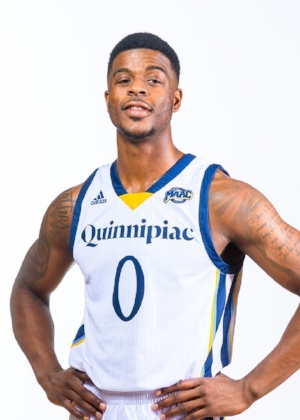
Perspective: Quinnipiac’s Aaron Robinson offers his personal thoughts as a Bobcat athlete.
On the afternoon of Dec. 9, 2017, the Quinnipiac University women’s basketball team lined up across the free throw line of its home arena standing at attention for the national anthem, holding hands as the players always do.
Directly across from the home team, the Princeton women’s basketball team looked quite a bit different.
As the anthem played, the 509 fans that were in attendance stood at attention, hats removed, eyes locked on the flag. No one seemed to notice that a few members of the Princeton women’s team were not standing. Instead, these players knelt in protest.
“I believe that police brutality and excessive violence is an issue in our country and that the use of force and police power disproportionately affects people of color,” Sydney Jordan, a senior on that Princeton Tigers, team said.
That, she said, is why she knelt.
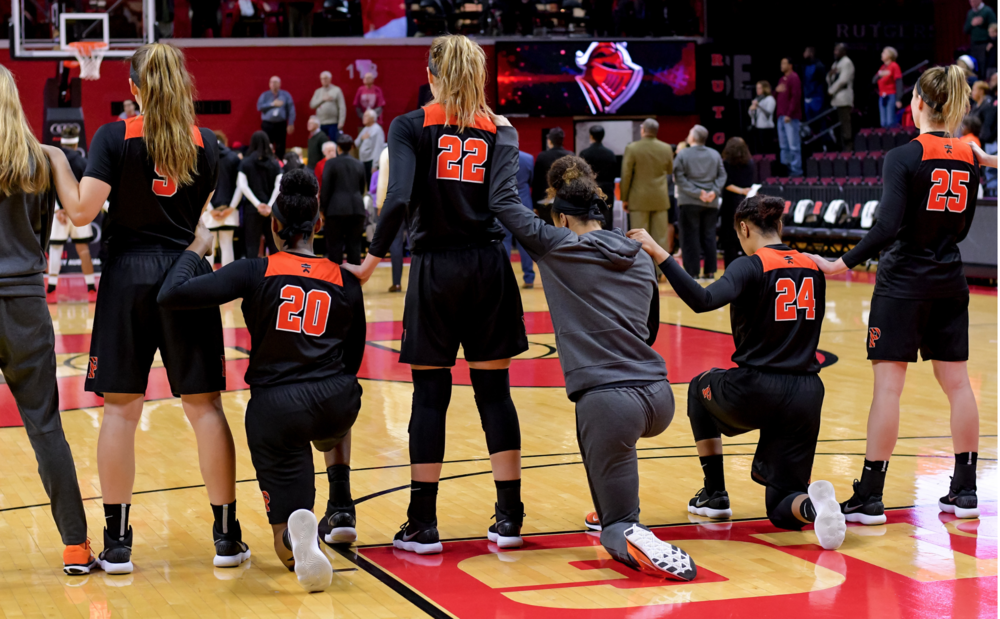
Jordan and her teammates followed the lead of former National Football League quarterback, Colin Kaepernick, who first took a knee during the anthem before a preseason game in August 2016 — a summer that witnessed a rash of police brutality against African American men.
Police officers shot and killed unarmed black men, such as Alton Sterling in Baton Rouge and Philando Castile outside of Minneapolis. Baltimore police found Freddie Gray dead in the back of a police van after he sustained injuries in custody, and an officer gunned down Terence Crutcher in the middle of a Tulsa street. None of the officers were found guilty.
These are just a few of the 855 African Americans who have been killed by the police since 2015, according to the Washington Post’s police shooting database. Of these 855 people, 90 were unarmed and another 27 were killed while possessing a toy gun.
The anger and frustration in the black community spilled into the playing fields and arenas of American sports.
“I am not going to stand up to show pride in a flag for a country that oppresses black people and people of color,” Kaepernick told NFL.com. “To me, this is bigger than football and it would be selfish on my part to look the other way. There are bodies in the street and people getting paid leave and getting away with murder.”
When Kaepernick took a knee, many fans and observers interpreted his action as a show of disrespect to the the flag and military.
On the other side of the issue, many maintained the action was a display of his First Amendment right to freedom of speech.
“I often think about the statement that Kaepernick and others in the NFL made and how, when limited to a single sport at a single competition level, it might appear as if other people don’t care,” Jordan said. “Thus, it was important to me to send the message that it’s not just a few successful football players who feel strongly about police brutality.”
Jordan and her teammates at Princeton, an Ivy League institution, were among few college athletes to join in what commonly became dubbed a “protest.”
Quinnipiac women’s basketball coach Tricia Fabbri stood on the sideline that afternoon when Tigers players knelt.
“I think how it’s been dealt with at the highest level just has a trickle-down effect,” Fabbri said. “You would understand young kids being nervous about what a university would think about them taking a stance. I think there are examples going on in real life that would give them real pause.”
Fabbri noted that Kaepernick, two seasons after his initial kneel, is still out of a job in the NFL. Eric Reid, who was Kaepernick’s teammate in San Francisco. only recently got signed again after a two-year hiatus from the NFL.
NFL owners came up with a policy that forces players to stand and “show respect” for the flag. And, President Donald Trump has made the athletes’ displays a rally cry, calling players who protest “sons of bitches” and going so far as to suggest they don’t belong in the U.S.
“You have to stand proudly for the National Anthem. You shouldn’t be playing, you shouldn’t be there. Maybe they shouldn’t be in the country…the NFL owners did the right thing” -President @realDonaldTrump pic.twitter.com/bt36t4EX5u
— FOX & friends (@foxandfriends) May 24, 2018
In 2018, ESPN the Magazine senior writer Howard Bryant published “The Heritage: Black Athletes, A Divided America, and the Politics of Patriotism.” The book details a history of athlete protest dating back to the 1940s, as well as police brutality against people of color reaching back even farther.
“Look at the people who speak out, they get killed,” Bryant said metaphorically. “What happened to Tommie Smith and John Carlos? They got destroyed. What happened to Muhammad Ali? He got destroyed? What happened to Colin Kaepernick? He got destroyed.”
The message, Bryant suggested, to college athletes is clear — stand or be destroyed.
Still, many see the complexity of the simple act of kneeling.
Quinnipiac’s chief diversity officer Don Sawyer, a former member of the military, said, “When we think about the people who are defending our freedom and fighting for the Constitution, they are fighting for our right to be able to protest in this nation.”
It is this culture that has been created by America and by a lot of these sports leagues that causes a lot of athletes, African American ones in particular, to exercise extreme caution when speaking out on social issues, and the pressures are magnified when examined from a college athlete’s perspective.
“I think in the college game, guys feel like they can be easily replaced and they don’t have the security to do something that could jeopardize their position,” said Taylor McHugh, a senior guard on the Bryant University men’s basketball team in Smithfield, Rhode Island. “A lot of guys fear the consequence and the backlash a little more than pros. The consequences are more severe.”
This idea of fear is one that comes up often for college athletes thinking of standing up for social justice. Ironically, most schools do not have policies that prohibit athletes from speaking out.
“We had conversations as an athletic department saying, ‘If it was to happen, what would be our reaction?; And the reaction would not be a retaliatory one,” Quinnipiac athletic director Greg Amodio said. “We are not interested in stifling anybody’s ability to deliver a message.”
Amodio said he actually hasn’t heard of policies elsewhere, either.
“When a lot of the protesting was going on, there was a lot of conversations amongst ADs saying, ‘What would you do? What would you do?’ and nothing like that ever came up,” he said.
Still, no athlete at Quinnipiac has put the lack of a policy to the test.
“I think the biggest reason is control. I think the player’s believe that they don’t have as much power as they have,” Bryant stated. “You walk in the door and they make it seem like they are doing you the biggest favor in the world. It is a matter of power, it is a matter of mindset.”
It seems fear has held the athletes in place.
“I’ve had friends who are college athletes who were thinking about protesting during the anthem, and it wasn’t necessarily, ‘If I protest, I’ll lose minutes,” said Trey Phills, a senior guard on the Yale men’s basketball team. “(Rather,) it was, ‘If I protest, this is going to detract from the team’s focus before a game,’ and the coach might have pushed against that or made them reconsider.”
College coaches and college administrators have an immeasurable impact on their players and the voice or lack thereof that their players have. Whether they explicitly state that protesting or participating in acts of activism are prohibited, athletes usually have a good understanding of what is and is not acceptable in the eyes of the university.
“I don’t recall someone specifically saying not to do it, but you could kind of feel the vibe that that might not be something that the university would like us to do,” McHugh said.
“In college, we’re young and we’re still trying to figure things out and often times you just want to take the path of least resistance just because you don’t know how that activism would affect your college career,” Phills said.
The fear of the unknown is a common theme among many college athletes. Not knowing how the coach would react, not knowing how the administration would react, not knowing how fans will react, or even potential employers.
College athletes often have worked their entire lives to put themselves in a position where they can have security in their life post college. The fear of losing all of that in the blink of an eye, as Kaepernick and many others did, is tangible.
Another factor is that NCAA student-athletes feel they are at the mercy of their respective universities when, in fact, the exact opposite may be the reality. Take, for instance, the collective action in 2015 of the University of Missouri’s football team, which threatened to boycott all football activities until the university president was fired or resigned. The football players — as well as many other students — were upset with the president Tim Wolfe’s handling of several racially charged incidents on campus. Two days after the threat, Wolfe stepped down.
“The common thread through Kaepernick, Kain Colter (who led a fight for the unionization of college football players in 2014) when he was at Northwestern, and (activist) Paul Robeson, is political education,” said Kevin Blackistone, a Washington Post sports columnist and professor of Journalism at the University of Maryland.
“They didn’t allow their colleges and universities to use them. They didn’t take study for granted — and that allowed them to understand not only their individual place in society, but the collective space people of color occupy.”
Jordan, who led the action for the Princeton women’s basketball team, got it.
“I think the comparative lack of activism at the college level can be, at least partially, traced to a feeling of uncertainty about our futures,” she said. “As college students, often without guaranteed employment, there is definitely a sense that we have not ‘made’ it yet. Consequently, I feel as if my future is very much dependent on the good will of others who want to see me do well.”
A college basketball player’s perspective: My thoughts on racism, kneeling
By Aaron Robinson
Part 1
October 2018 — 50 years since U.S. sprinters John Carlos and Tommie Smith took a historic stand on the medal podium in Mexico City for the whole world to see.
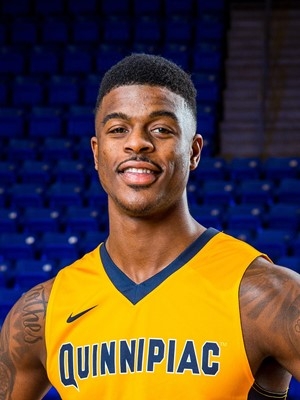
Aaron Robinson
At the 1968 Summer Olympics, after winning gold and bronze medals in the 200-meter race, Smith and Carlos called it a “Human Rights Salute,” advocating for equal rights and representation in society as their white counterparts.
The International Olympic Committee expelled Smith and Carlos from the rest of the games and banned them from the Olympic Village.
The irony of the situation is that Avery Brundage, the president of the IOC, was also IOC president at the 1936 Olympic Games in Berlin where many athletes gave a Nazi salute as they passed German chancellor Adolf Hitler throughout the Games.
No suspensions.
No punishments.
Brundage said the salute was a national symbol at the time, that it was acceptable, but yet Carlos’ and Smith’s action was not.
Even knowing in 1968 that the salute supported the genocide of millions of Jewish people, Brundage determined that the fists of two black men merited suspension.
Fast forward to today’s climate in which Colin Kaepernick, a former starting quarterback who led his team all the way to the Super Bowl five years ago, is out of a job after kneeling during the national anthem before games.
Find out the hurdles athletes face when pursuing activism.
Why is he out of a job?
It has nothing to do with his talent as a quarterback that’s for sure. It is because he took a stand. It is because he decided to speak out against an issue that, for some, isn’t even an actual issue.
As a black athlete, I am here to tell you — racial inequality in American is a real issue.
In an interview with NFL.com in 2016, Kaepernick said, “I am not going to stand up to show pride in a flag for a country that oppresses black people and people of color. To me, this is bigger than football and it would be selfish on my part to look the other way. There are bodies in the street and people getting paid leave and getting away with murder.”
But of course, rather than admitting that police brutality was the root of the issue and facing it and addressing it, many people changed the narrative.
They tried to make it about the flag. They tried to say that Kaepernick showed disrespect toward the flag and American armed forces for not standing for the anthem.

Colin Kaepernick takes a knee during the national anthem alongside his teammates during the 2016 NFL season. Kaepernick began his protest during the preseason in protest of police brutality and racial injustices against African Americans. (Flickr)
Kaepernick actually sat down with a member of the military before he began to kneel to discuss ways that he could protest without being disrespectful to those that fight for this country. The solution proposed by the soldier was to kneel. In the military, when a soldier dies or is injured during battle, members of the military keel to show respect to that individual.
From a sports perspective, whenever a player gets injured, everyone takes a knee while that player is down in order to show respect for that individual.
But the message became muddled.
In my opinion, the reason people are so upset is because Kaepernick — as a black athlete — took a stand against something that, quite frankly, the white NFL owners and the many white fans do not understand or experience.
They don’t care that cops get paid leave after killing unarmed black men over and over again.
They don’t care that the cops, if they go to trial, are often acquitted of charges for murder.
They don’t care that a black life is still not seen as equal to a white life in the eyes of many.
As long as nothing comes between them, their money and their entertainment on Sunday afternoons, they’re OK.
Plain and simply, they don’t want to hear from a football player. They want their ballplayers to be silent and content with the fact that he is a millionaire NFL quarterback.
ESPN The Magazine senior writer Howard Bryant said, “They don’t want to hear from us. They want us to be grateful. They want us to be quiet. If you’re not rich then you’re a drain on the society, if you are rich, then what are you complaining about they want you to be grateful. They don’t want to hear from you at all.”
“Us,” of course, being African Americans, “they” being white Americans.
This narrative of the white public wanting black athletes to be silent was never more evident than in February when Fox News’ Laura Ingraham got on the air and suggested that basketball stars Lebron James and Kevin Durant should “shut up and dribble.”
This came directly after a segment aired with James and Durant sitting in the backseat of a car with ESPN anchor Cari Champion, and the three discussed President Donald Trump’s racist remarks.
Rather than address Trump’s racist and divisive comments, Ingraham condemned the athletes for even mentioning it. She then insulted the athletes, joking about their lack of intelligence and poor grammar. She attempted to slight their credibility to speak on politics because they are athletes who, according to her, “get paid 100 million dollars to dribble a ball.”
The idea to “shut up and dribble,” though, is that — as Bryant, who recently published a book called “The Heritage: Black Athletes, a Divided America, and the Politics of Patriotism,” points out — it is ridiculous. Why? Because there has never been a time throughout our long history as a nation that black athletes have not been political.
“If you know your history, it was the white public and the white sports leagues that wanted black players to talk about politics in the first place,” Bryant said. “Who was asking Jesse Owens to get involved in politics against Hitler? It was the white media. Who was asking Jackie Robinson to get involved in politics? It was Branch Rickey and the Dodgers. It was white people asking black players to get involved.”
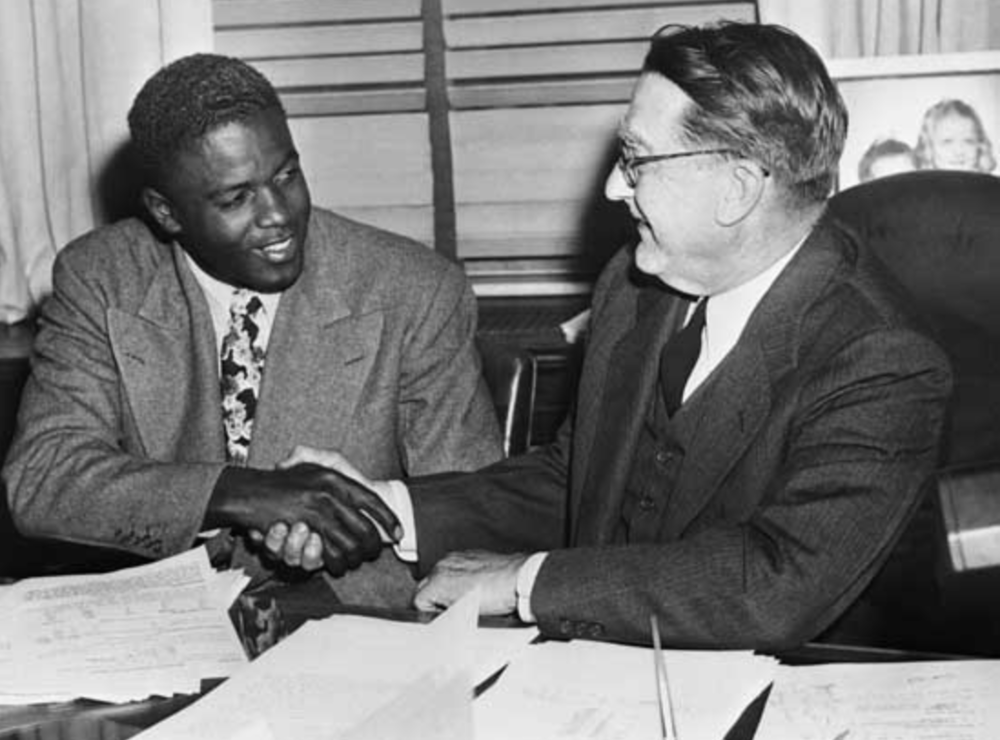
Jackie Robinson and Brooklyn Dodgers general manager Branch Rickey shake hands after agreeing to a contract back in 1948.
Bryant also went on to talk about other black athletes, such as Tiger Woods, Michael Jordan and O.J. Simpson, who have been criticized because of their lack of activism when it comes to politics and society.
Essentially, if you speak out, they’re mad at you. If you don’t speak out, they’re mad at you.
Bryant said, “They don’t want to hear from us at all. They want us to be silent and succumb to the oppression and the dehumanization of our people. They want us to be OK with our status in America and our lack of representation in society. They want us to accept the fact that there are black bodies in the streets and cops receiving paid leave only to eventually be acquitted of all charges.”
And that is exactly why we black athletes must speak.
We must use our voices to speak out and seek change because if we sit around and wait for the next person to make a change, we will be waiting for a cold day in hell.
Athletes have a voice and a platform that very few others have. It is absolutely essential that we, as black athletes, do not underestimate the power that we have.
We have the opportunity and the responsibility to be active members of our communities and to stand up for things that we believe in.

Members of the Miami Heat wear hoodies in support of Trayvon Martin after he was gunned down by George Zimmerman, a neighborhood watch volunteer.
Part 2
I think the majority of African Americans agree that things in this country right now, from a race relations point of view, are far from ideal.
Millions of people support Kaepernick on his stance against police brutality. You hear the conversations among athletes. You see the tweets.
Yet, the number of people who are sitting and watching in silence far outnumbers the amount of people who are actually taking a knee, or protesting — myself being one of them.
I am probably one of the most “woke” pro-black people you will find, but I haven’t taken a knee yet. And to be honest, unless something drastic changes, I don’t know if I will this season either.
Why not?
Because I am a Division I college basketball player and I have seen what has happened to professional athletes who have spoken out. I watched Colin Kaepernick get exiled from the NFL. I watched all-pro safety Eric Reid suffer the same fate until just a few weeks ago when he was finally signed after a two-year hiatus. Carlos and Smith served as an example. Muhammed Ali was stripped of his title because he spoke out against the Vietnam War and refused to serve.
The lesson is this: Black athletes who speak out against issues like this get destroyed.
If I were to speak out, who is to say that my scholarship will not be taken away? Who says that my coaches don’t take away my playing time? Who says I do not get expelled from school?
All of these fears are very real for black athletes and these fears are magnified for college athletes.
Professional athletes such as Kaepernick and Reid had the opportunity to make millions of dollars prior to them ever taking a knee. They were set for life regardless of what the outcome of their protest was.
I am a broke college student who comes from nothing, so I have literally everything to lose in this situation. If I lose this scholarship, I lose everything that I have ever fought for in my entire life.
Athletes struggling with Crohn’s Disease battle more than opponents
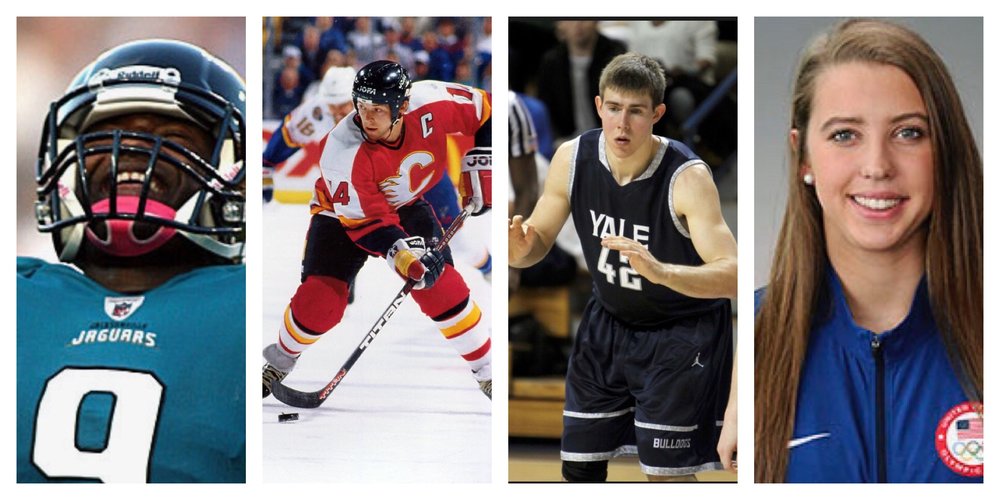
Photo courtesy – IPZ, Team USA, YaleBulldogs
By: Joshua Silverman
Former Yale University basketball forward Matt Townsend remembers hearing the diagnosis.
“Crohn’s disease.”
“Lifelong,” he recalls the doctor saying. “Daily medication.”
The doctor’s conclusion devastated Townsend, a 6-foot-7 Rhodes Scholar who graduated in 2015.
“I just remember going home and crying in the shower,” he said. “Growing up, I can’t really remember other times emotionally crying like that.”
Crohn’s disease affects over 780,000 people in the United States. It’s an inflammatory disease that attacks the small bowel and colon. While the cause is unknown, the pain can be so bad people can’t get out of bed.
The pain and symptoms that come with it can often lead to surgery and the removal of the infected parts of a person’s intestines. On top of the physical pain, the disease often exacts an emotional toll.
Athletes are not immune to the disease’s punishment, either.
For Matt Townsend, former National Football League quarterback David Garrard, former National Hockey League wing Theo Fleury, Olympic swimmer Kathleen Baker, Cleveland Cavalier forward Larry Nance Jr. and others, Crohn’s disease, and the symptoms that come with it, are just more competition.
Along with the emotions of being diagnosed, there is also the pain. Garrard, who has felt the punishment of NFL linebackers, could barely stand up his stomach hurt so badly.
“When I reported to the team in March of 2004, I told our trainer that my stomach’s been bothering me and it’s kind of always been a little upset,” Garrard said.
“He gave me some kind of diuretic,” he added. “I went back home later that night and threw it up and just sort of realized, ok, there is something more going on here than just an upset stomach. I went to the gastroenterologist the very next day and they did all these tests. The doctor got me in the room and said, it looks like it’s Crohn’s disease.”
He was blindsided by what was ahead.
“I said, ‘OK, great I’ve never heard of that so it can’t be that bad,’” Garrard said. “I called my wife on the phone and told her and she started to look things up. She said, ‘Wow, David it’s a lot worse than what we thought it was.’”
When Garrard was diagnosed in 2004, he had research and technology available. That can’t be said for Fleury, whose diagnosis came in 1995
“I was searching for information and ways to cope, ways to heal, ways to cure,” Fleury said. “I was at the mercy of my doctors and having to trust them and that they knew what they were doing.” Fleury, a perennial all-star, would continue on to score 445 goals over his 15 years career, mostly playing for the Calgary Flames.

Townsend dealt with the disease privately.
“I think that living with a chronic illness, I never wanted to be framed by that disease,” Townsend said. “I didn’t want people to look at me differently or question my ability to perform at a high level. I guess I wanted more control over how I could shape my identity and felt more comfortable doing that without discussing that part of my life.”
According to the American College of Gastroenterology, Crohn’s disease — which has no cure — likely develops from a combination of genetic, environmental. and immune system factors.
While the disease has a lot of negatives associated with it, it also brings an opportunity to build on your foundation.
“I think any adversity you face in life where you don’t use destructive ways to deal with whatever you’re dealt with puts you in a position of education and educating yourself,” Fleury said. “That then allows you to help other people when they reach out for help.”
Dr. Thomas Ullman, Chief Division of Gastroenterology at Montefiore Medical Center, has seen his patients’ struggle differently depending on their lifestyle.
“While an office worker or a college student might have the benefit of working from home or adjusting their schedule in some way to account for having a chronic illness, no such luxury is afforded to the professional athlete,” Dr. Ullman said. “Anecdotally, athletes in must adopt a resilience not known to non-athletes, likely a part of their emotional make-up t given the long hours of difficult physical training that is at the core of all professional athletes.”

Garrard, who was drafted in the fourth round of the 2002 NFL Draft, played nine seasons in the NFL, all with the Jacksonville Jaguars, for whom he started 76 games. While he faced challenges in the NFL, his battle with Crohn’s was different.
“Crohn’s was something I had to rely on doctors and on medicine and on eating healthy for,” Garrard said. “If I can get through something like that, then the other stuff is basically minute compared to that. This is something that could have almost destroyed my whole life if I really let it and didn’t attack it head on and be positive throughout it.”
At the 2016 Olympics in Rio de Janiero, Baker, an American from Winston Salem, North Carolina, won a gold medal in the 4×100 medley relay and a silver in the individual 100-meter backstroke at just 19 years old. She had already been dealing with her diagnosis for six years.
“I have an extreme appreciation for my sport and Crohn’s has made me appreciate being healthy,” Baker said. “It’s definitely built up so much mental toughness whether that be in school, swimming or just in life.”
As an autoimmune disease, Crohn’s affects people in different ways. For example, while one course of action may ease one patient’s symptoms, it may not for another individual.
“I think from a very young age I had learned to, for lack of a better word, suck it up,” Townsend added. “I don’t think that’s always the best approach to things but I think for me personally it was very helpful and focusing my effort.”
The emotional effects of the disease can hamper athletes nearly as much as the physical, too.
“When I was diagnosed, my coach told me we weren’t going to have to change any of my dreams because of this. I think that really meant a lot to me,” Baker said. “My parents really helped me through everything and really made me feel like this wouldn’t deteriorate any part of my life.”
Garrard turned to his teammates for support.
“They realized – in almost an instant – that the game was almost taken from me,” Garrard said. “They showed up when I was in the hospital when I had my surgery (to have some his intestines removed). A lot of the coaches came in and wanted to make sure that I wasn’t just there by myself — that they were there with me.”
Fleury, who also battled addiction during his 16-season career in the NHL, leaned on his sense of humor.
“I just think that you go through periods of time where you always have to be weary of where washrooms are in every situation that you’re in because you never know what’s going to happen,” Fleury said. “I’ve had lots of accidents and lots of times when I wasn’t close to a washroom and accidents happen.”
After his diagnosis, Cleveland Cavaliers forward Larry Nance Jr. was looking for a role model. Now, he has formed his own charity, Athletes vs. Crohn’s disease.
“What is really cool is Larry is one of those kids that, when he was first diagnosed, did research on what other athletes are out there that have it and of course my name came up for him and he was like, ‘OK, this is my dude, this is my hero,” Garrard said of the 2015 first-round pick.
Nance, who is 25 years old and in his fourth NBA season, speaks publicly about Crohn’s disease, how it has affected him and how he deals with it.
“I’m proud to see that one of those kids that said I was an inspiration to him actually made it through. (He) does a lot of charity and, hopefully, I was able to be a little piece of that,” Garrard said.
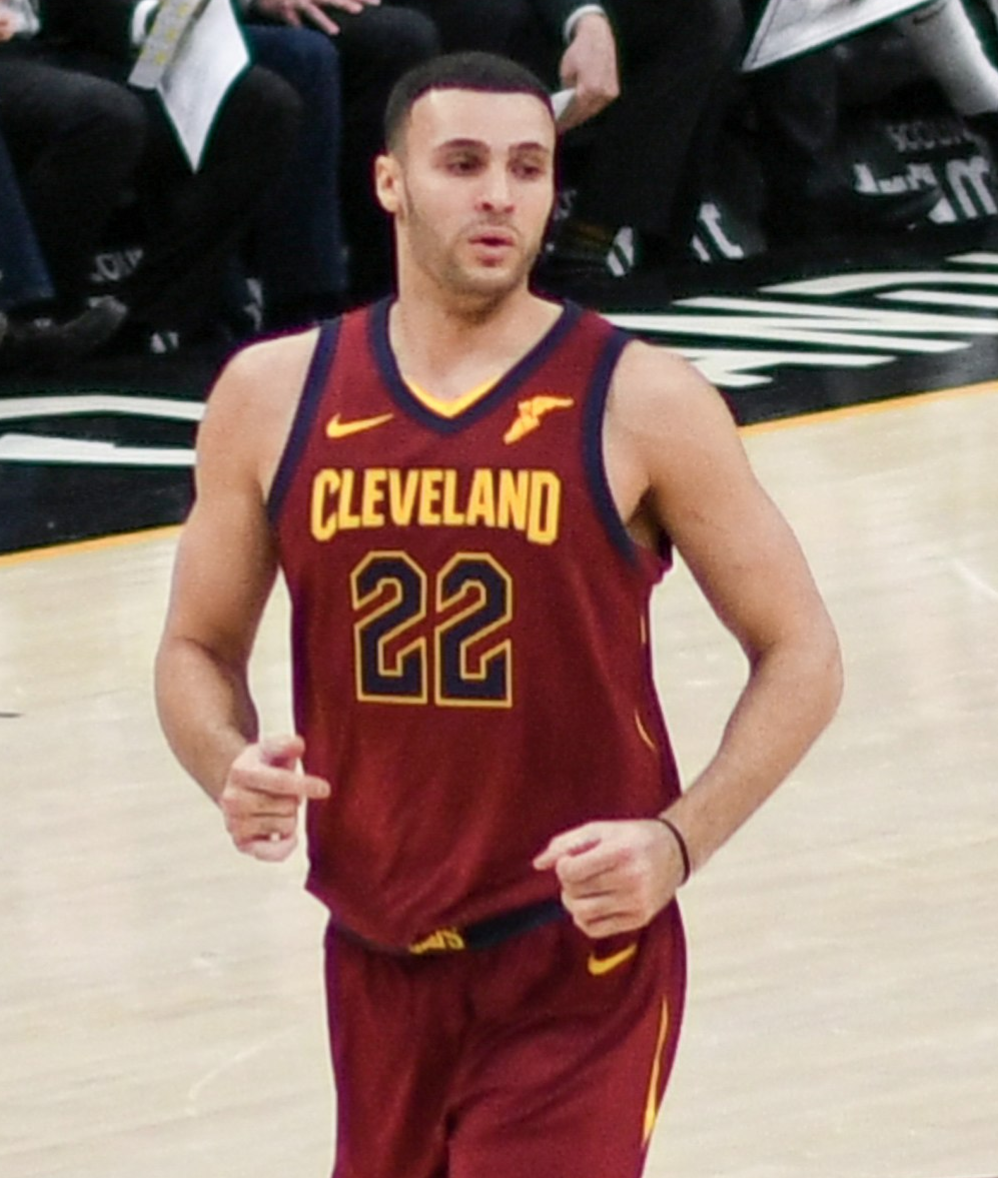
After facing Crohn’s head on, these star athletes are able to look at the disease as yet another challenge to overcome. They managed to play their respective sports at the highest levels despite the trouble that was happening inside their bodies. Taking on the disease wasn’t just enough for them, they have now become an inspiration for the next generation of kids growing up with Crohn’s.
Best of the Rest:
Blue and gold… and green
By Ana Grosso

College is a place of innovation, thought development and self-awareness, making it the perfect environment to educate students to fight back against climate change. But often, students’ day-to-day priorities overshadow our environmental consciousness. With the constant on-the-go lifestyle and busy schedules, student waste goes overlooked and sustainability takes a back seat.
Erin LeDrew, senior sociology major and vice president of Students for Environmental Action (SEA), set out on a mission to see just how conducive to waste the college lifestyle can be. LeDrew’s experiment, called “A Week Without Waste,” attempted to reduce the amount of paper and plastic that college students rely so heavily upon.
“I would say the biggest challenge was, especially living on York last year, they don’t have anything reusable,” LeDrew said.
Quinnipiac University’s York Hill campus only has plastic and paper forms of dish and silverware, “So, if I was reusing anything, I was bringing it from my dorm,” she said. “I definitely got looks. It was definitely a stigma like, ‘what are you doing?!’ but there was literally no other option.”
Even on the university’s Mount Carmel campus, LeDrew had limited options. She could not eat from the sushi or noodle bar as those items only come in plastic, she couldn’t grab any items to go or eat any snacks that came in packaging, or even eat anything that required toppings. The cafe independently packages everything from ketchup to cream cheese and peanut butter to maple syrup. Additionally, whenever LeDrew went to order hot or freshly-made food, she had to remember to ask the server to put it on a ceramic plate instead of the default paper one.
LeDrew brought reusable silverware and dishware with her to campus every day to eliminate single-use plastic waste. “It was so hard when I was busy because there’s no compostable takeaway containers, they’re all plastic,” LeDrew recalled. “I remember running between classes and meetings and unless I could sit down and eat, I wasn’t eating anything unless it was an apple or a banana.”
LeDrew found Coffee, tea, and water the easiest to consume waste-free in the cafe because she brought her own reusable coffee mug and water bottle. However, smoothies, iced coffee and most juices were not feasible because they only came in single-use plastic.

This is an example of two people’s waste from just a quick snack in the café. Multiply this by 7,361 undergraduate students, and those living on campus eat at least three meals per day.

Colleges witness significant spikes in their solid waste at the end of the school year as well, according to Connecticut’s Department of Energy & Environmental Protection.
There are other aspects of the university outside of food waste that challenge just how sustainable this campus is.
Hundreds of students live within just two or three miles of each other, yet the university’s north parking lot is filled to capacity every school day.
“Nobody uses the shuttles and I just wish that people would carpool more, even just going into town or grocery shopping,” LeDrew said. Obviously, students’ schedules do not match up perfectly, but even the minor inconvenience of coming to campus a little early or staying a little later is enough to deter students from carpooling or taking the shuttle.
“Also, why wouldn’t you want to save on gas?!” LeDrew added.
This attitude of indifference perpetuates the lack of sustainability at Quinnipiac, and creates a stigma around environmental consciousness.
“I honestly think that Quinnipiac as a whole is extremely wasteful in most ways,” LeDrew said. “Just for example, I heard a girl complaining about how the default on printers is double-sided. She likes when they’re printed single-sided and doesn’t want to have to choose the option to print single sided.”

A company called Resonate LLC. conducted a Campus Culture Report in 2014. In the report, the company wrote, “We sometimes heard students characterized as uninformed and unengaged. A related perception that we heard is that the student body generally suffers from an attitude of entitlement.”
The combination of student loftiness and poor encouragement lead to a deadly cycle of indifference towards the environment.
“I feel like people really just don’t care here,” Jen Zurek, sophomore nursing major said.
63.7 percent of Quinnipiac students agreed that most students are not really concerned about sustainability issues, according to Resonate.
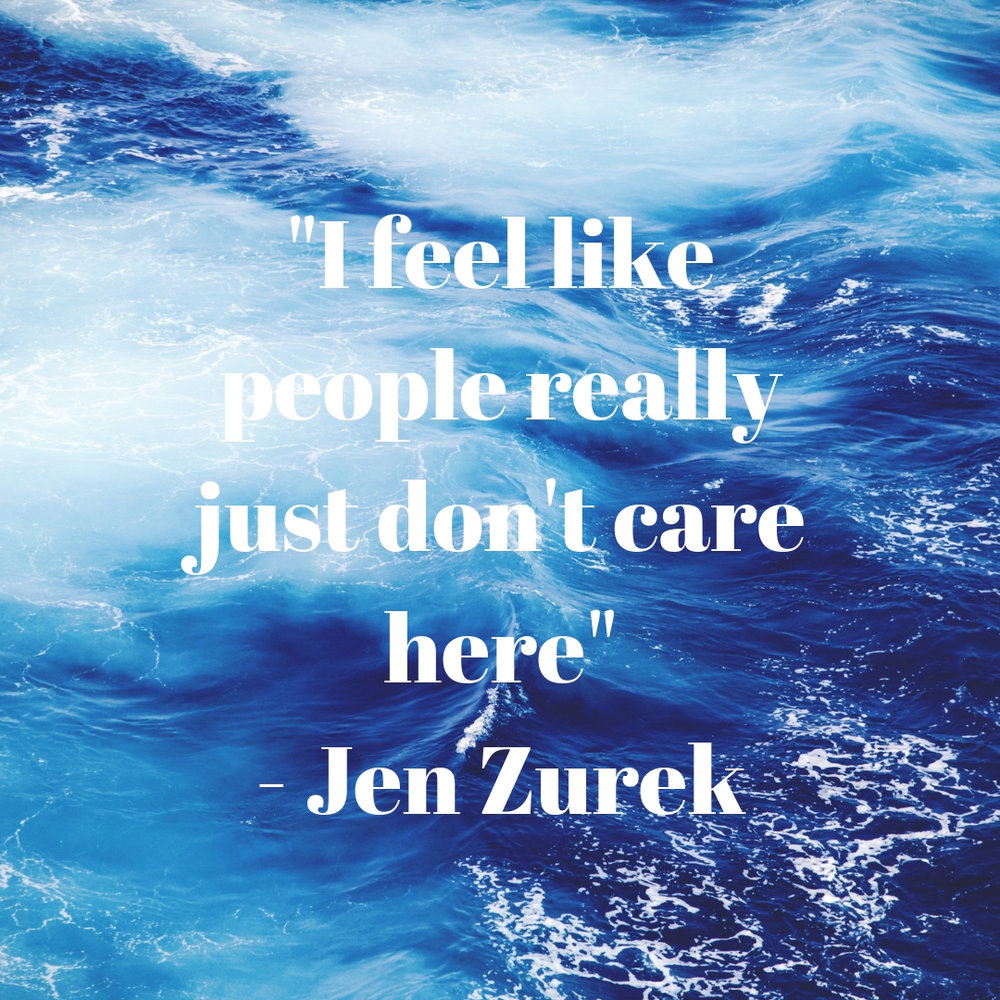
Indifference is also fueled by convenience and vice versa. Quinnipiac’s staff works tirelessly behind the scenes to ensure an efficient and enjoyable college experience for the students. The rugs and floors are spotless, but there is never a sign of anyone polishing them. The facilities department cleans every student’s bathroom who lives on main campus before they even wake up in the morning. When disposing of dishes in the cafeteria, students simply place all of their dirty dishes, trash, food, and recyclables onto a speedy conveyor belt that whisks away the mess just as quickly as it was created.
But, is environmental consciousness being sacrificed for the sake of efficiency and student service?
“It’s easier to grab plastic water bottles you can just throw out and plastic utensils you don’t have to walk to the conveyor belt for,” LeDrew said, explaining possible reasoning for such environmental indifference.
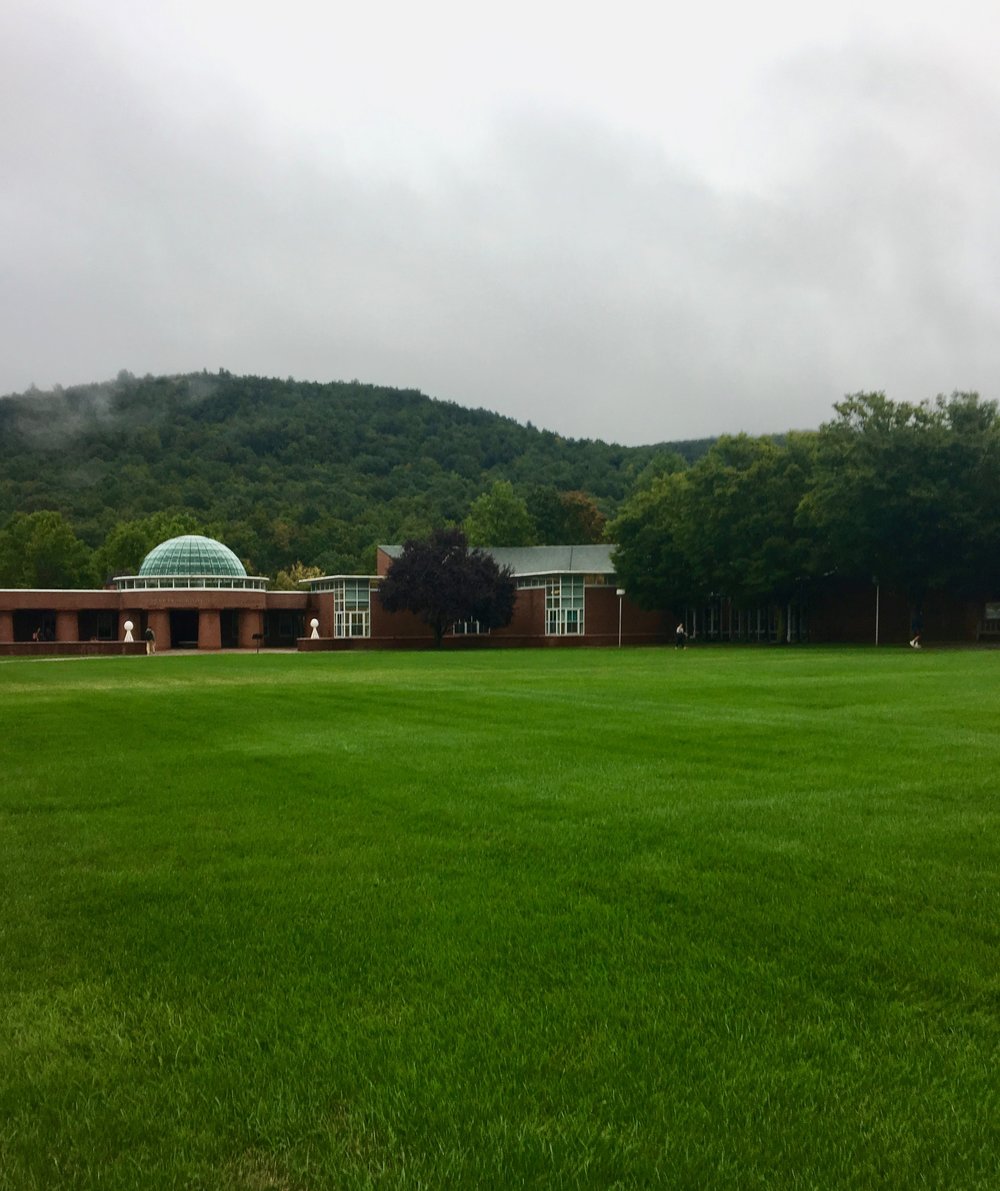
The grass on the quad is always perfectly groomed, yet one hardly ever sees a lawn mower. In fact, when you look at Quinnipiac’s sprawling Mount Carmel campus, one of the first things you’ll notice is that it looks quite green. Ironically, that “green” look ends up doing more harm than good for the environment because of the water waste and pesticide runoff.
A running joke among students is that no matter what time of year, the grass on the quad is always green. LeDrew heard students lamenting over the fact that the university’s sprinkler system was on during the intense rain storm on Sept. 25 in which Hamden saw seven inches of rain in just one hour.
However, the university actually labels its York Hill campus as the “green” one.
At the summit of York Hill looms 25 cylindrical wind turbines that dominate the grassy mound. However, even on the windiest of days, only one or two rotate ambitiously. Students on campus often wonder what their purpose is.
“Those things have to be broken,” senior Katie Herrick said. “I literally haven’t heard anyone mention them or their purpose since I’ve been here.”
There’s a reason why.
“At the moment, the wind turbines on York Hill are decorations,” said engineering professor John Reap. “Mechanical and electrical problems rendered them incapable of producing power some time ago, and to my knowledge, the university does not have a plan to repair, replace or reconfigure them.”
According to The Quinnipiac Chronicle, “The reason the wind turbines have been almost entirely non-functional since they began to fail is because the manufacturer, Windspire, went bankrupt.”
“Anyone can see for themselves, if you look at the wind turbines on York Hill, they’re never moving,” 3+1 public relations major Leah Lavin said.
The sprawling 250-acre campus was completed in 2010. Reap said that the wind turbines had not been working since before he arrived at the university in 2012. The turbines were originally designed to generate just over 32,600 kilowatt hours per year. That would be roughly enough power to light almost 450 light bulbs for one month.
Other efforts on York’s campus include 1,232 photovoltaic solar panels on the roof of the Crescent Residence Hall. The panels convert energy from the sun to electricity and generate about 250,000 kilowatt hours per year.
“There is so much more room for solar panels not only on York Hill, but all over campus,” Lavin said.
Reap believes that the solar system on York Hill feeds the university’s electrical grid.
Despite those steps, the campus’ cafeteria still uses single-use silverware and dishware.
Resonate LLC.’s report noted that “(t)he QU student body is viewed, by students and faculty alike, as intelligent, but generally unaware of and unengaged with sustainability… We heard several examples of students being unwilling to perform small feats of conservation, such as turning off lights when leaving a room (because ‘I pay $50,000 to go here, so I can leave the lights on if I want.’)”
“People don’t realize that they have an effect on everything,” LeDrew said. “Especially if you’re someone who’s constantly buying way more than you can eat, or just buying plastic water bottles every single day just to get rid of your meal plan.”

Mandatory meal plan is another factor that prompts wastefulness on the university level. “I think that people have no concept of what they’re wasting because a lot of people have $600 left and will just buy whatever they want,” LeDrew said.
Resonate’s Campus Culture Report also stated that, “Students expressed views about fellow students saying, “They don’t recycle at all,” and “In the dining hall, they throw everything away.”
Lavin also noticed that, “The trash cans are not only overflowing with stuff that could have been reusable, but also food that could have been donated or put into a compost system which would be really helpful for our environment.”
Quinnipiac has not drawn much attention to the campus culture reports.
Political science professor Sean Duffy said, “As with many ‘studies,’ this one seems to have lived primarily on a shelf somewhere – it’s never really guided any action on the part of QU.”
Even at a local level, Resonate LLC. noted in its Sustainability-Focused Curriculum Report that, “Other benchmarking metrics show that QU lags behind a majority of the Peers/Aspirants in broad-based sustainability performance recognition, as well as involvement in industry organizations. We note, however, that the Peers/Aspirants have among them some very high performers with respect to sustainability.”
LeDrew would be one of those performers. She interns at the Albert Schweitzer Institute in the
Food Systems & Sustainability division, and is working to change people’s mindsets towards waste. “It’s such a disconnect for people,” she said.
“The Albert Schweitzer institute is a huge advocator for environmentalism on campus, and it’s very much overlooked. Not many people know what it does at all actually,” Lavin remarked. Duffy is the executive director of the Albert Schweitzer Institute and hopes to create an official space there specifically for environmentalism.
One of the things LeDrew is working on at the institute is a hierarchy with food waste. “The idea behind the hierarchy on campus is that the first priority with excess food is donation. The next option is composting or reusing, and disposing is the absolute last resort,” she said. She is also hoping to put a large scale on the wall of the café to make students more aware of the effect their waste has.
LeDrew is not alone in hoping that these efforts come to fruition. Reap chairs the university’s sustainability committee, which has roughly 24 faculty members, but welcomes students as well. At the bi-semester meetings, the members discuss green opportunities across campus such as local farmers markets, the greenhouse on the North Haven campus and composting opportunities on Main Campus.

Perhaps these initiatives inspired the university to further their sustainability efforts. Quinnipiac is offering environmental studies as an independent major this year, and Anna Ciacciarella is taking full advantage. She is a sophomore English & environmental studies double major and on Oct. 3-7, she and fellow sophomore Sabrina Escobar attended the Society for Environmental Journalists conference in Flint, MI.
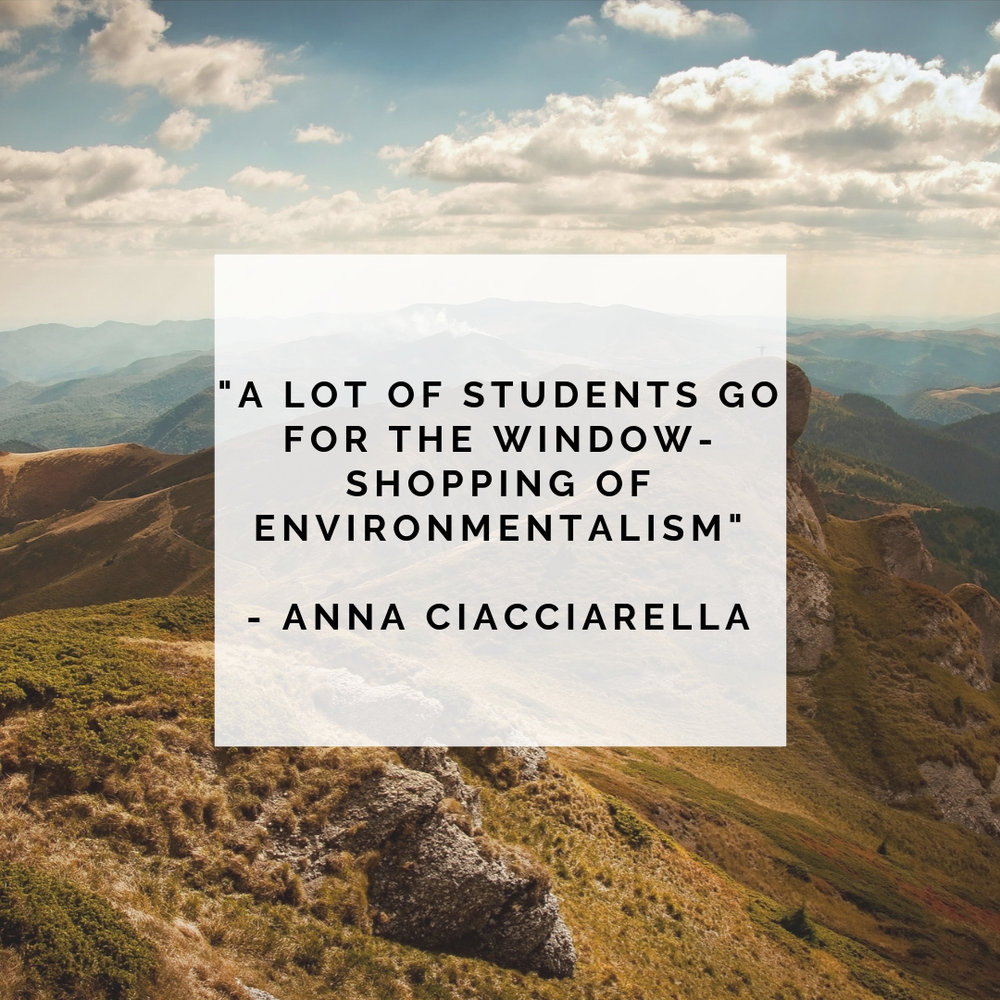
At the conference, Ciacciarella and Escobar learned how to bring issues of social justice as well as wastefulness to light at a local level. “I think people here feel like they don’t need to care about the environment because it’s not directly impacting them. If they were in a community such as Flint, Michigan, they would be feeling the effects, and they would realize they have to make a difference,” Ciacciarella said. “A lot of students go for the window shopping of environmentalism… but the way we’re going to get things done is with the students realizing we have to make true change, not just change at face value.”
If the university continues to engage students in sustainability efforts, perhaps that would in turn inspire students to engage other students.
Powerful Podcast: QU Women on #MeToo and Sexual Harassment
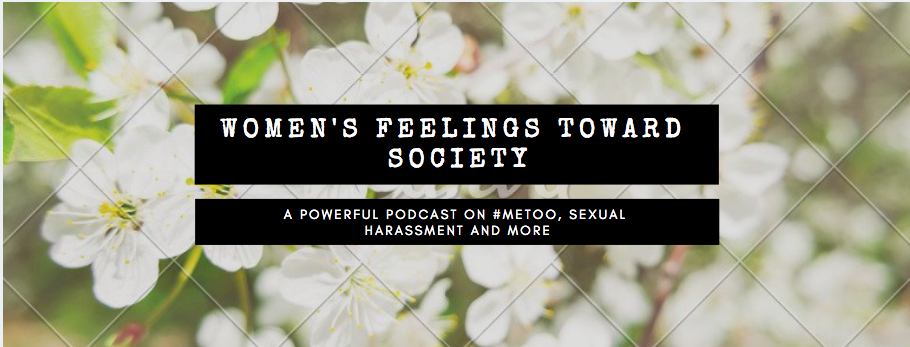
This podcast was deemed powerful for a reason.
Inspired by the Kavanaugh hearing and confirmation, Paige Meyer, Ana Grosso and Sarah Foley sat down with Quinnipiac students to hear their concerns and their perspectives on sexual assault in our society and its impact on college students. While creating this podcast, the goal was to capture the perspectives of sexual assault in our society and the impact that gender and politics have on college students in the Quinnipiac community.
Listen to hear five powerful females explain their take.
Quinnipiac to be a tobacco-free school in 2019, according to President Olian
On November 15, 2018, President Judy Olian announced that Quinnipiac will become a tobacco-free university starting on Jan. 1, 2019. In an email sent to students, Olian said that tobacco products, including electronic cigarettes, will be banned.
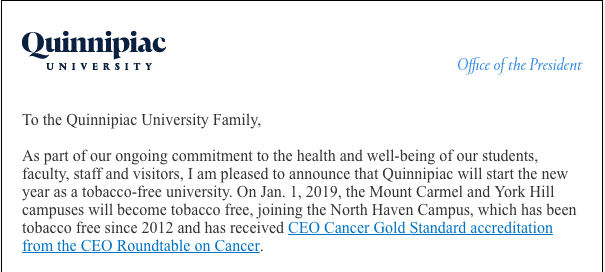
Both the Mount Carmel and York Hill campuses are following suit after the North Haven campus, which became tobacco free in 2012. The Quinnipiac North Haven campus received the CEO Cancer Gold Standard accreditation from the CEO Roundtable on Cancer.
“It’s important for students to take into consideration what they are putting in their bodies (so) Quinnipiac deciding to push this to other campuses besides North Haven is great,” said Cassandra Reyes, an Occupational Therapy student. “Why not really take care of the students by making a huge health decision like this?”
This new policy prohibits the use of all tobacco products on campuses from regular cigarettes, to hookah-smoking products. Students on campus use a variety of smoke products that, according to experts, have negative effects on the body.
These negative effects can have deadly repercussions. Tobacco use is the “single largest preventable cause of death and disease in the United States,” according to the CDC. Nearly a half-million people die a year from smoking cigarettes and 41,000 die from secondhand smoke.
“Honestly, I hate the smell of cigarettes or any kind of smoking. I grew up watching my uncle gradually get very sick because of his smoking addiction and he lost his life to it,” said Andres Baez, sophomore. “When I see people my age walking around campus smoking so much it disgusts me and saddens me at the same time.”
According to the American Cancer Society, “Cancer-causing agents (carcinogens) in tobacco smoke damage important genes that control the growth of cells, which causes them to grow abnormally or to reproduce too rapidly. More than 70 such cancer-causing chemicals have been identified in cigarette smoke to date.
“The research is unequivocal on the deleterious health consequences of smoking and nicotine products,” Olian said in the email. “We have an obligation to all members of our community to support a healthy learning, working and social environment for our students, faculty, staff and visitors.”
The U.S Department of Health & Human Services conducted research approximating that 2.6 million high school and college students were currently tobacco users in 2017. This figure, however, is much smaller in proportion to adolescent tobacco use forty years ago. Only one in 25 teens smoked tobacco products in 2017.
But considering the smaller, yet still-living presence of college students smoking in the 21st century, not everyone is on-board with the new policy.
“President Olian made a strong decision. I vape all the time, that’s a way for me to destress myself. I know the harm it has to my body, but that’s the thing, it’s my body. I understand the betterment as a whole, but this is just a bit annoying,” said Quinnipiac freshman, Leo Thomas.
Although the decision to become a tobacco free university stirred-up different opinions from students and faculty, the main goal of implementing this new policy is to assist students, faculty and staff while quitting smoking. Ultimately, this will assist in creating a healthier community at Quinnipiac University.
Donating debunked
By: Kelly Ryan
Driving down streets in Hamden, Wallingford and other surrounding towns, you may spot a handful of big, metal bins settled in corners of parking lots at gas stations, laundromats or car washes.
On the side of each bin printed in big letters may read “Clothes & Shoes.” There is probably a big “THANK YOU!” stamped somewhere on it too.
There may be a pile of stretched out pajamas shoved in the back of your bottom dresser drawer or a bag of too-small t-shirts in the trunk of your car. The first place you may think to drop your unwanted clothes may be in one of these bins.
But have you ever put any thought into where the clothing you may drop in ends up?
Where does all of it go?
Read more at Shorthand.com.


